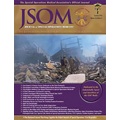Preliminary Comparison of Pneumatic Models of Tourniquet for Prehospital Control of Limb Bleeding in a Manikin Model
Gibson R, Aden JK, Dubick MA, Kragh JF 16(2). 21 - 27 (Journal Article)
Background: Emergency tourniquet use has been associated with hemorrhage control and improved survival during the wars since 2001, but little is known of the differential performance of pneumatic tourniquet models. The purpose of this study was to compare the performance of three models of pneumatic tourniquets in a laboratory setting to aid a possible decision to field test suitable models for medic preference. Methods: A laboratory experiment was designed to test the effectiveness of tourniquets on a manikin thigh. Three models (one Emergency and Military Tourniquet [EMT] and two Tactical Pneumatic Tourniquets differing in width: 2 in. and 3 in. [TPT3]) were compared with the standard-issue Combat Application Tourniquet of a strap-and-windlass design. Two users conducted 40 tests each on a right-thigh manikin (HapMed Leg Tourniquet Trainer) with a simulated above-knee amputation injury. Measurements included effectiveness in hemorrhage control, pulse stoppage distal to the tourniquet, time to stop bleeding, blood loss, and pressure. Results: All four models were 100% effective in both hemorrhage control and pulse stoppage distal to the tourniquet. The TPT3 had the slowest mean time to stop bleeding and the highest mean blood loss. The EMT had the least mean pressure. An interuser difference was found only for mean pressure. Conclusions: All models of tourniquet performed equally well for both the critical outcome of effectiveness and the important outcome of pulse stoppage, whereas results for secondary outcomes (time, pressure, and blood loss) differed by model. The EMT had best performance for every type of measurement.


 Español
Español 




